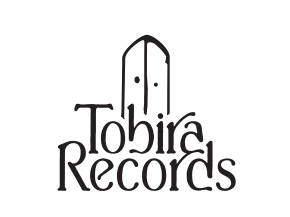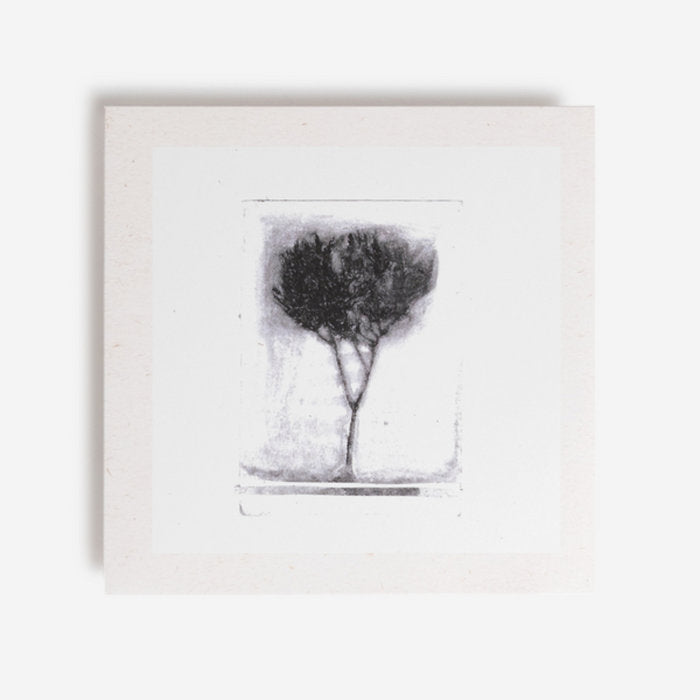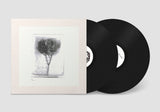Optiki Mousiki // Tomos 2 2xLP
- Availability:
ギリシャの実験音楽家Optiki Mousiki aka Costis Drygianakisが、1994年に自主リリースしたカセットの再発2枚組レコードです。
サイケデリックなストレンジビーツ〜エキゾチック・アンビエント4曲を収録。
以下、レーベルによる解説です。
"1984年から1987年まで、ギリシャ人アーティストのCostis Drygianakisと、友人や共同制作者の寄せ集めで、オプティキ・ムジキ(Optiki Mousiki)名義で数多くのレコーディングを行った。1987年にリリースされた初のフルアルバム『Tomos 1』は、初期の多作期を記録したもので、グリズリーなインダストリアル・ノイズの要素に、めくるめく電子音響実験や野性的なインストゥルメンタル・スティンギングが組み合わされている。1994年にリリースされた『Tomos 2』は、自身の音楽だけでなく、アヴァンギャルド・アートが一般的にどのような役に立つのかについて、Drygianakisが長い間自省した後に発表された。前作とはまったく異なるこのアルバムは、一般的なテイストの考え方に疑問を投げかけ、「非真面目な」音楽的アイデアを伝統的な要素と折り重ねながら、キリスト教の聖者の生活からチベット仏教、スーフィズム、ヒンドゥー教の物語まで、近くて遠い精神世界から暫定的に引用することを試みている。
Drygianakisは、ソクラティス・シノプロス、コスタス・ツィアノス、ディミトリス・ヤガス、ロス・デイリー、コンスタンティノス・カラグーニスといった共演者の演奏を録音することからこのプロセスを始めた。彼はラリッサでスタジオ・エンジニアとして働いていたが、その仕事は過酷で、金銭面でも苦しいものだった。それとは対照的に、オプティカル・ミュージックスとしての仕事は、より情熱的で深く個人的なものとなり、アルバムの制作は、彼のメランコリーとフラストレーションを、インスピレーション、衝動、欲望を溶かし合わせた4つの長いトラックに注ぎ込むという、独自の人生を歩むことになった。このプロジェクトは、シンセサイザーとコンピューターに興味を持つDrygianakisによるエレクトロニック・ミュージックが中心であったため、アコースティックな世界とデジタルをつなぐ架け橋が必要だった。それは、伝説的なAkai S-1000サンプラーという画期的な機材だった。このツールによってドライギアナキスは、あらゆる音楽的スペクトラムからサウンドを引き出し、彼のニーズに合わせることができるようになり、夢のような遠く離れたサウンドと、身近に録音されたアイデアを融合させることができた。
その結果、例えばタンジェリン・ドリームの "Zeit "やディアマンダ・ガラスの "The Divine Punishment "など、影響を受けたものから創造的な空気をうまく引き出し、西洋から根を下ろすことなく東洋に向かってシグナルを発する、反抗的なまでにユニークな音の雲を形成したアルバムが生まれた。冒頭の1/4は、しゃっくりするような電子リズムと沈んだシンセサイザーの上に華麗なストリングスが重なり、催眠術のようなヴォーカル(歌、詠唱、話し声)がアルバムの宗教的テーマを誇張することなく暗示する。第2部では、ドライギアナキスは、かすかでミニマルなピアノと、アコースティックからエレクトロニックへとゆっくりと移り変わる穏やかな雰囲気で、ニューエイジ・ミュージックの境界線を越えることなく触れている。壮大でシネマティックな第3章では濃密なインストゥルメンタル・ドローンが特徴的で、第4章と最後のセクションでは、宗教的なヴォーカル・テクニックとバルカンの弦楽器の華やかさを、焼けるようなノイズと不協和音のエレクトロ・アコースティックな慟哭に焼き変え、Drygianakisの最も破砕的な処理を聴かせてくれる。
約30年後に聴く『Tomos 2』は、ほとんど予言的に聴こえる。ワールド・ミュージック、ニューエイジ、アヴァンギャルドの論理に意識的に疑問を投げかけることで、Drygianakisは、日を追うごとに息づき続ける物語を作り上げることに成功したのだ。"
レーベルその他作品はこちら /// Click here to see more Heat Crimes releases available at Tobira.
-------------------------------------------
2x12" black vinyl. Includes mini booklet insert.
Heat Crimes:
"Launching a series of co-releases in collaboration with freshly inaugurated Athens label Untag, comes this very special album from 1994 available for the first time on digital and vinyl by Greek composer Costis Drygianakis.
From 1984 until 1987, Greek artist Costis Drygianakis and a ramshackle assembly of friends and collaborators produced a slew of recordings under the name Optiki Mousiki, or Optical Musics. Their first full-length "Tomos 1" was released in 1987 and documented a prolific early period, combining grizzly industrial noise elements with dizzying electro-acoustic experiments and wild instrumental stings. "Tomos 2" is a collection of work taken from the band's second epoch after a brief hiatus; released in 1994, it arrived after a long period of self-reflection from Drygianakis about not only what his own music represented, but what avant-garde art might be useful for in general. A very different album from its predecessor, it attempts to question popular ideas of taste, folding together "non-serious" musical ideas with traditional elements while tentatively drawing from the spiritual world both near and far, from the lives of the Christian saints to tales of Tibetan Buddhism, Sufism and Hinduism.
Drygianakis started the process by recording performances from his collaborators such as Sokratis Sinopoulos, Kostas Tsianos, Dimitris Yiagas, Ross Daly and Konstantinos Karagounis. He had been working as a studio engineer in Larissa but the work had been grueling and the financial side of the business was painful. In contrast, his work as Optical Musics became more passionate and deeply personal, and the creation of the album took on a life of its own as he channeled his melancholy and frustration into four long tracks that melted together his inspirations, impulses and desires. Since the project was primarily electronic, driven by Drygianakis's interest in synthesizers and computers, there needed to be a bridge between the acoustic world and the digital. That came from a revolutionary piece of gear: the legendary Akai S-1000 sampler. This tool allowed Drygianakis to pull sounds from across the musical spectrum and tailor it to his needs, fusing dreamy, far-off sounds with ideas recorded closer to home.
The result is an album that neatly pulls creative air from its influences - Tangerine Dream's "Zeit" and Diamanda Galas' "The Divine Punishment", for example - and forms it into defiantly unique sonic clouds that signal towards the East without uprooting themselves from the West. The opening quarter layers ornate strings over a hiccuping electronic rhythm and submerged synthesizers, allowing hypnotic vocals - sung, chanted and spoken - to suggest the album's religious themes without overstating it. On the second segment, Drygianakis reduces his sounds to a whisper, with faint, minimal piano and gentle atmospheres that slowly shift from acoustic to electronic, touching the boundaries of new age music without crossing it. Dense instrumental drones characterize the epic, cinematic third chapter, while the fourth and final section offers us Drygianakis' most crushing treatment, burning religious vocal techniques and Balkan string flourishes into searing noise and dissonant electro-acoustic wails.
Listening almost three decades later "Tomos 2" sounds almost prophetic, picking up on themes and concepts that have only become more relevant. By consciously questioning the logic of world music, new age and the avant-garde, Drygianakis managed to formulate a narrative that continues to draw breath with each passing day. "
Artist : Optiki Mousiki
Label : Heat Crimes
ギリシャの実験音楽家Optiki Mousiki aka Costis Drygianakisが、1994年に自主リリースしたカセットの再発2枚組レコードです。
サイケデリックなストレンジビーツ〜エキゾチック・アンビエント4曲を収録。
以下、レーベルによる解説です。
"1984年から1987年まで、ギリシャ人アーティストのCostis Drygianakisと、友人や共同制作者の寄せ集めで、オプティキ・ムジキ(Optiki Mousiki)名義で数多くのレコーディングを行った。1987年にリリースされた初のフルアルバム『Tomos 1』は、初期の多作期を記録したもので、グリズリーなインダストリアル・ノイズの要素に、めくるめく電子音響実験や野性的なインストゥルメンタル・スティンギングが組み合わされている。1994年にリリースされた『Tomos 2』は、自身の音楽だけでなく、アヴァンギャルド・アートが一般的にどのような役に立つのかについて、Drygianakisが長い間自省した後に発表された。前作とはまったく異なるこのアルバムは、一般的なテイストの考え方に疑問を投げかけ、「非真面目な」音楽的アイデアを伝統的な要素と折り重ねながら、キリスト教の聖者の生活からチベット仏教、スーフィズム、ヒンドゥー教の物語まで、近くて遠い精神世界から暫定的に引用することを試みている。
Drygianakisは、ソクラティス・シノプロス、コスタス・ツィアノス、ディミトリス・ヤガス、ロス・デイリー、コンスタンティノス・カラグーニスといった共演者の演奏を録音することからこのプロセスを始めた。彼はラリッサでスタジオ・エンジニアとして働いていたが、その仕事は過酷で、金銭面でも苦しいものだった。それとは対照的に、オプティカル・ミュージックスとしての仕事は、より情熱的で深く個人的なものとなり、アルバムの制作は、彼のメランコリーとフラストレーションを、インスピレーション、衝動、欲望を溶かし合わせた4つの長いトラックに注ぎ込むという、独自の人生を歩むことになった。このプロジェクトは、シンセサイザーとコンピューターに興味を持つDrygianakisによるエレクトロニック・ミュージックが中心であったため、アコースティックな世界とデジタルをつなぐ架け橋が必要だった。それは、伝説的なAkai S-1000サンプラーという画期的な機材だった。このツールによってドライギアナキスは、あらゆる音楽的スペクトラムからサウンドを引き出し、彼のニーズに合わせることができるようになり、夢のような遠く離れたサウンドと、身近に録音されたアイデアを融合させることができた。
その結果、例えばタンジェリン・ドリームの "Zeit "やディアマンダ・ガラスの "The Divine Punishment "など、影響を受けたものから創造的な空気をうまく引き出し、西洋から根を下ろすことなく東洋に向かってシグナルを発する、反抗的なまでにユニークな音の雲を形成したアルバムが生まれた。冒頭の1/4は、しゃっくりするような電子リズムと沈んだシンセサイザーの上に華麗なストリングスが重なり、催眠術のようなヴォーカル(歌、詠唱、話し声)がアルバムの宗教的テーマを誇張することなく暗示する。第2部では、ドライギアナキスは、かすかでミニマルなピアノと、アコースティックからエレクトロニックへとゆっくりと移り変わる穏やかな雰囲気で、ニューエイジ・ミュージックの境界線を越えることなく触れている。壮大でシネマティックな第3章では濃密なインストゥルメンタル・ドローンが特徴的で、第4章と最後のセクションでは、宗教的なヴォーカル・テクニックとバルカンの弦楽器の華やかさを、焼けるようなノイズと不協和音のエレクトロ・アコースティックな慟哭に焼き変え、Drygianakisの最も破砕的な処理を聴かせてくれる。
約30年後に聴く『Tomos 2』は、ほとんど予言的に聴こえる。ワールド・ミュージック、ニューエイジ、アヴァンギャルドの論理に意識的に疑問を投げかけることで、Drygianakisは、日を追うごとに息づき続ける物語を作り上げることに成功したのだ。"
レーベルその他作品はこちら /// Click here to see more Heat Crimes releases available at Tobira.
-------------------------------------------
2x12" black vinyl. Includes mini booklet insert.
Heat Crimes:
"Launching a series of co-releases in collaboration with freshly inaugurated Athens label Untag, comes this very special album from 1994 available for the first time on digital and vinyl by Greek composer Costis Drygianakis.
From 1984 until 1987, Greek artist Costis Drygianakis and a ramshackle assembly of friends and collaborators produced a slew of recordings under the name Optiki Mousiki, or Optical Musics. Their first full-length "Tomos 1" was released in 1987 and documented a prolific early period, combining grizzly industrial noise elements with dizzying electro-acoustic experiments and wild instrumental stings. "Tomos 2" is a collection of work taken from the band's second epoch after a brief hiatus; released in 1994, it arrived after a long period of self-reflection from Drygianakis about not only what his own music represented, but what avant-garde art might be useful for in general. A very different album from its predecessor, it attempts to question popular ideas of taste, folding together "non-serious" musical ideas with traditional elements while tentatively drawing from the spiritual world both near and far, from the lives of the Christian saints to tales of Tibetan Buddhism, Sufism and Hinduism.
Drygianakis started the process by recording performances from his collaborators such as Sokratis Sinopoulos, Kostas Tsianos, Dimitris Yiagas, Ross Daly and Konstantinos Karagounis. He had been working as a studio engineer in Larissa but the work had been grueling and the financial side of the business was painful. In contrast, his work as Optical Musics became more passionate and deeply personal, and the creation of the album took on a life of its own as he channeled his melancholy and frustration into four long tracks that melted together his inspirations, impulses and desires. Since the project was primarily electronic, driven by Drygianakis's interest in synthesizers and computers, there needed to be a bridge between the acoustic world and the digital. That came from a revolutionary piece of gear: the legendary Akai S-1000 sampler. This tool allowed Drygianakis to pull sounds from across the musical spectrum and tailor it to his needs, fusing dreamy, far-off sounds with ideas recorded closer to home.
The result is an album that neatly pulls creative air from its influences - Tangerine Dream's "Zeit" and Diamanda Galas' "The Divine Punishment", for example - and forms it into defiantly unique sonic clouds that signal towards the East without uprooting themselves from the West. The opening quarter layers ornate strings over a hiccuping electronic rhythm and submerged synthesizers, allowing hypnotic vocals - sung, chanted and spoken - to suggest the album's religious themes without overstating it. On the second segment, Drygianakis reduces his sounds to a whisper, with faint, minimal piano and gentle atmospheres that slowly shift from acoustic to electronic, touching the boundaries of new age music without crossing it. Dense instrumental drones characterize the epic, cinematic third chapter, while the fourth and final section offers us Drygianakis' most crushing treatment, burning religious vocal techniques and Balkan string flourishes into searing noise and dissonant electro-acoustic wails.
Listening almost three decades later "Tomos 2" sounds almost prophetic, picking up on themes and concepts that have only become more relevant. By consciously questioning the logic of world music, new age and the avant-garde, Drygianakis managed to formulate a narrative that continues to draw breath with each passing day. "
Artist : Optiki Mousiki
Label : Heat Crimes




![Violence Gratuite // Baleine à Boss LP [COLOR]](http://tobirarecords.com/cdn/shop/files/bal1_a342d5ff-8dbc-417e-b0d5-a4579cb76f26_medium.jpg?v=1745806383)
![Masaka Masaka // Barely Making Much LP [COLOR]](http://tobirarecords.com/cdn/shop/files/mak_medium.jpg?v=1741162459)
![MC Yallah & Debmaster // Gaudencia LP [COLOR]](http://tobirarecords.com/cdn/shop/files/agu1_3e912b64-d22b-462c-aeca-2e58b623e105_medium.jpg?v=1754883013)
![Authenticaly Plastic // ROCOCO RUINE LP [COLOR]](http://tobirarecords.com/cdn/shop/files/roco1_medium.jpg?v=1754882851)